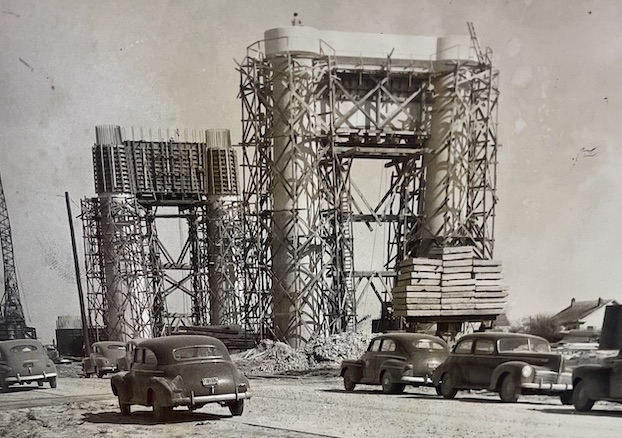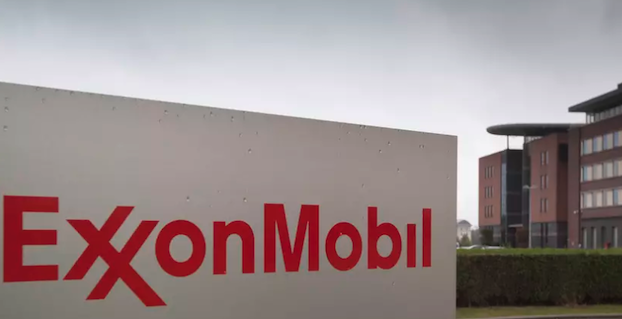Kudla: Plenty more work coming to area
Published 2:23 pm Tuesday, May 6, 2014
Local architect Jeff Kudla is changing the landscape of the Lake Area. The design of the Lake Charles Transit Complex – called a “gateway to downtown Lake Charles” by the city’s administration – is proof.
The facility components include a 12,600-square-foot administrative building with leasable tenant spaces, a 6-bus transfer canopy with a 600-square foot enclosed waiting area, a 1600-square-foot multi-purpose pavilion, and a courtyard with fountain at the corner of Clarence and Ryan streets.
The tile and brick work, landscaping, covered pavilion with seating and water feature make the area seem more park-like than official government building-like, and though the complex is only a couple of years old, the style looks similar to other turn of the century downtown structures.
Trending
But don’t expect similar buildings to pop up across Southwest Louisiana.
Kudla isn’t a big proponent of any particular architectural style or time period and he doesn’t foresee a time in the future when people pass his buildings and immediately identify those as Jeff Kudla-designed.
He lives in a historically significant home. It was the residence of Coca Cola heiress Marsha Freeman and probably built in the early 30s. Local preservation advocate Adley Cormier describes Freeman as, “a larger than life personality who enjoyed turning sow’s ears into silk preservation treasures. She had a good head and, thankfully, apparently deep pockets for making things work in old houses.”
When asked if his home featured any out-of-the-ordinary architectural elements, Kudla said that Freeman, after being advised by her doctor that she needed to incorporate more exercise into her routine, added an indoor swimming pool.
“When I have worked on indoor pools, controlling the humidity is a big deal. It’s best to isolate the pool from other spaces in a building – but there probably weren’t a lot of people with indoor pool expertise in the area back then.” The first thing the Kudlas did when they bought the house was to put glass doors between the living area and the pool. Then they took the glass out in the pool area and changed it to bug screens.
Kudla’s been involved in the preservation of local landmarks like the Cash and Carry Building and the Calcasieu Marine Building.
Trending
His office building at 429 Kirby St. was built soon after the Great Fire of 1910 and though he doesn’t know for certain, he thinks it was a dry cleaners, and at one time, the office of Goldband Records.
“I heard that Dolly Parton signed her first contract here,” he said. He emailed her publicist for confirmation but so far hasn’t heard anything.
When Mayor Randy Roach contacted Architect Jeff Kudla to submit his ideas for a new transit building, Kudla surprised the city officials when he proposed re-creating the existing structure rather than tearing it down. He told them that no one builds buildings like that anymore.
Kudla said that the building, constructed in the 60s was originally the Calcasieu Savings building and featured no ornamentation. “I’m sure it was the cat’s meow for its time,” he said. He proposed “pulling the skin off” the building and make it look even older.
But don’t peg Kudla as a staunch preservationist or worshipper of turn of the century styled construction. He acknowledges that it’s possible that the same pride in workmanship in buildings of old may not be in evidence in all of today’s structures and believes that sometimes its necessary to calculate the point of diminishing return.
“I am not an advocate of preserving old buildings just because they are old. Nor would I tear down something that works. Some older buildings are truly landmarks that carry significance worth preserving. Other old buildings may have outlived their intended purpose but are capable of being re-used and should be. Some very interesting projects can come from this situation. It is entirely possible for new and old buildings to coexist happily and they can also not get along, just like people,” he said.
He’s busy. His work is varied and he believes there’s plenty more work coming to the Lake Area. He’s the architect for the new nursing facility at Sowela. He’s about to start work on a Leesville Fire Station. And he calls it “fascinating” to work around airplanes when he talks about his past Chennault and Lake Charles Regional Airport projects. He’s done a limited number of homes and has no plans to grow more residential business.
He’s happily challenged by the detail and complexities involved in restaurant work. But the project that has proved the most challenging in his career thus far are the four elevated dwelling units he constructed on Monkey Island for Lake Charles Pilots. “They had to withstand 150 mph winds and 20-feet waves and since everything had to be barged out, we couldn’t use concrete,” he said.
“If anything, I have a softspot for contemporary,” he admitted.
For him, it’s a style that works because it strips away ornamentation and focuses primarily on function. However, he understands that it’s a style that has its drawbacks.
“I like the supposed purity of the modern or contemporary aesthetic but a certain sterility comes with it that I am not always fond of. The modernist response is that activities and furnishings that go on in the room bring the life to it. For example, a purely modern approach would work well for a museum but could make for a lame dining experience,” he said.
According to Kudla, it’s important to place different styles into the contexts in which they are created. “People did not pull this stuff out of thin air. Certain styles are responses to what the culture was thinking, asking and exploring. It’s representative of the time period.” Not being able to see that could be compared to not being able to see the forest because you’re surrounded by the trees, he said.
So how does he determine the style of his buildings? Kudla’s manner could pass for a Southwest Louisiana good ol’ boy with his easy-going nature and love of the outdoors, especially fishing.
But when he’s asked how he determines the best design for a structure, he sounds more like the sensitive, artsy type when he says things like, “You have to have a feel for what wants to be there…. I don’t want to force my way on things.”
Take for instance the Phoenix building at the corner of Clarence and Ryan. “That’s the best corner in town,” he said. The old city hall is on one side. It’s adjacent to the courthouse. Behind it is the timeless design of The Cathedral. Kudla said he had to respect the fabric of the landscape and “not make a lot of noise.” He responded with the look inspired by New Orleans architecture. “If that would have been an empty block the response would have completely different,” he said.
There are times when the building is driven chiefly by what the client wants and Kudla respects that, but he marvels at how some architects build the same style building again and again.
“There’s an architect who has this rock star fame quality. All his buildings are white and on a grid. He’s perfected it. But he builds this same building in Barcelona, Atlanta and Aspen.”
Kudla believes that, ideally, the surroundings should have more influence on the design of the final structure.
For the new port administration building, he pushed his staff to produce ten architectural renderings for the board to choose from.
Rather than being worried that too many choices would drag out the decision process, it had the exact effect he hoped. Board members were able to look at each drawing and decide what they liked best and least about the styles, then quickly narrow down what they wanted. Kudla took that input and created the approved design, a current interpretation of the region’s vernacular.
When asked if the new port design is the structure that wants to be there, he responded: “The key is to observe, listen and try different things until you get to the point that it works. Then you go with it. There are many ways to solve a problem.”
Not a strict proponent of the old or new, but always appreciative of what works, Kudla’s designs, more than anything, reflect his pragmatism and an appreciation for the people and landscape that make up his Southwest Louisiana home.




